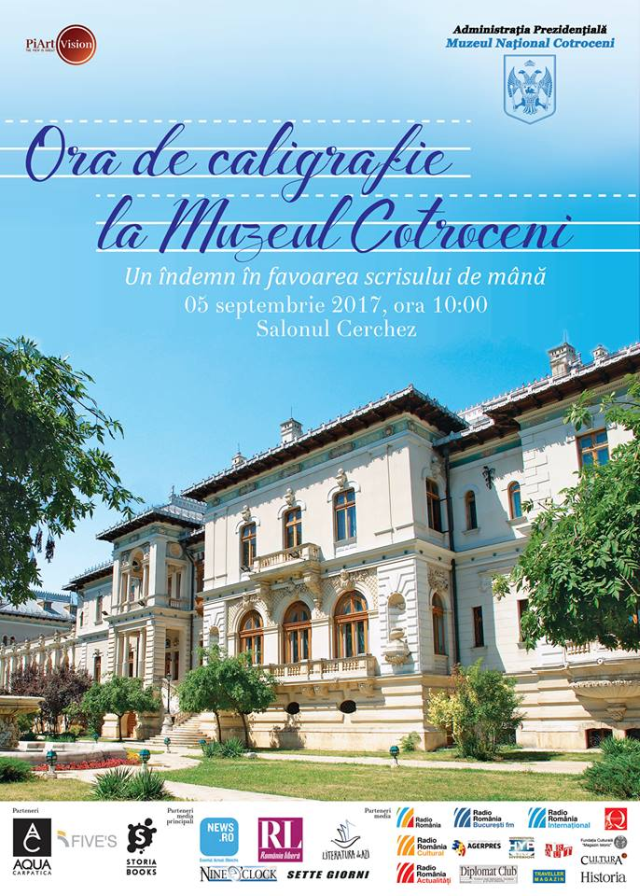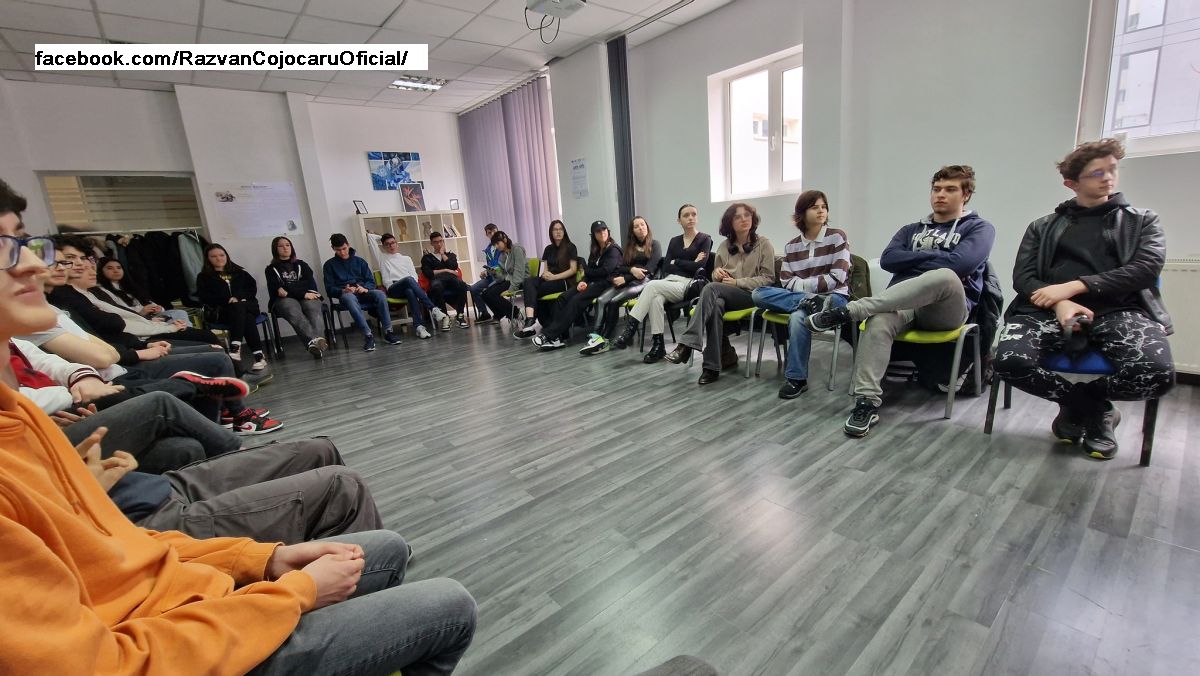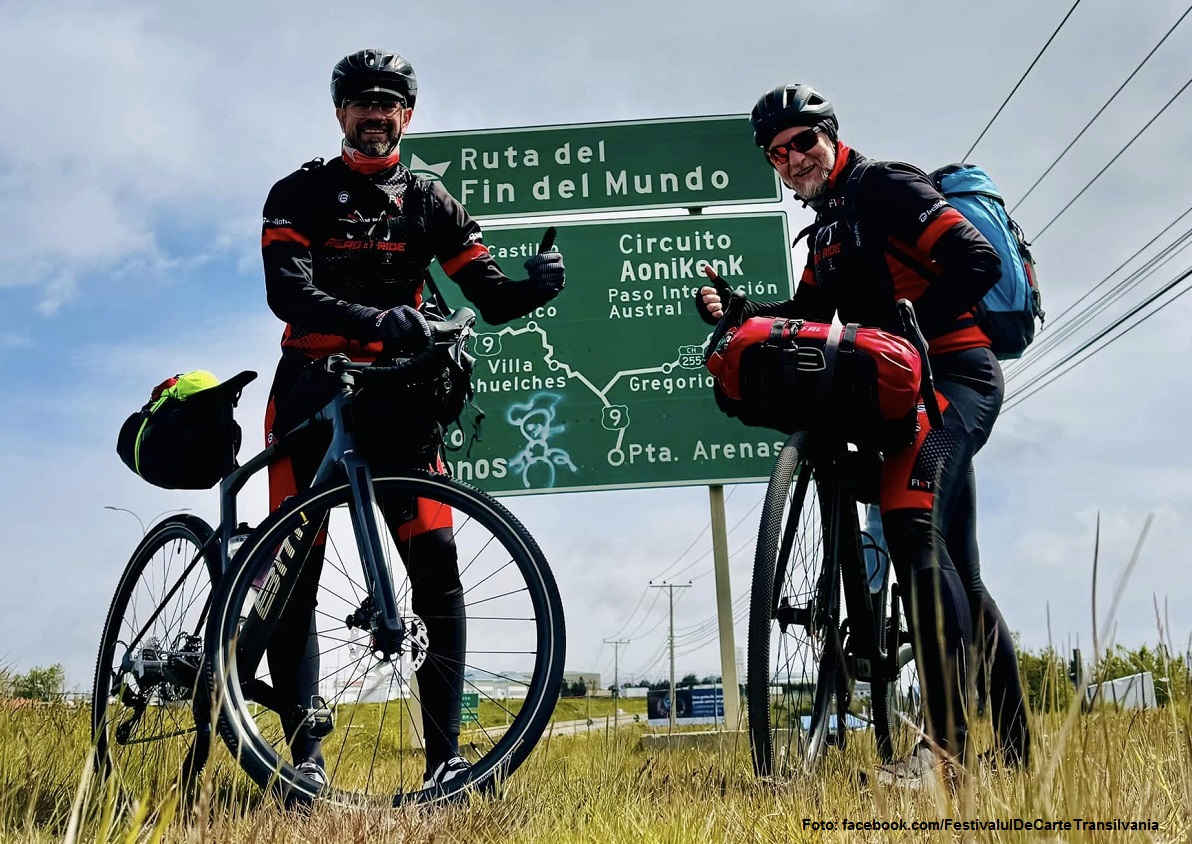The Calligraphy Class
Calligraphy classes for kids

Ana-Maria Cononovici, 01.10.2019, 13:11
A new school year has started and the Cotroceni National Museum resumed an event initiated three years ago, themed “The Calligraphy Class”. From one year to the next, the event has enjoyed the participation of a great number of children. Jointly with personalities in various fields, children discuss the importance of calligraphy, also trying their hand at doing fine calligraphy work for short texts.
This year, joining children in desks were outstanding philosopher and intellectual Mihai Sora and Cristian Gatu, a former member of Romanias national handball team that at the Montreal Olympics in 1976 walked away with silver, also winning bronze at the 1972 edition of the Olympic Games in Munich. Then there were the head-coach of Romanias national gymnastics team, Octavian Bellu, gymnast Larisa Iordache, an Olympic, world and European champion and also a winner of the bronze medal in the nations competition at the London Olympics in 2012. We recall Iordache was also a four-time world medalist and a 12-time European champion. Also taking part in the event was writer Ana Barton.
In 2019, The Calligraphy Class had sports as its main discussion topic, as sports is something pupils need to practice, without neglecting other subjects in the curricula. The message conveyed to pupils was that sports and school must go hand in hand quite all right.
The head-coach of Romanias national gymnastics team, Octavian Bellu, explained those attending the event that in Deva, he devised a special education system, by means of which his trainees did not neglect their school responsibilities in any way.
Octavian Bellu:
“In gymnastics, Im sure you known that, training is intensive, training stages are very long. Im not going to come up with examples, but what comes to mind is Lavinia Milosovici, who was a 1st grader when she arrived in Deva and left when she was 20. The two sides tied in with one another. What was very well thought out in Deva was the fact that the school curricula was tailored to suit training needs, since there were two training sessions per day, we created a loophole for all that, we examined some psychology studies stating that in class, a pupil cannot focus continually for more than 30 minutes, so we sort of crammed the subjects. Practically, there were six or five subjects taught in three contacts hours. The thing is that at the end of the 12-grade school cycle they had no problem passing the baccalaureate exam. They were properly prepared, intellectually, and also had utterly exceptional performances”.
Octavian Bellu:
“Any parent would like to have an intelligent child, he wants his child to be intellectually prepared, yet they should not forget that child must be in good health, must be strong, life is a competition and, unless he is well prepared physically, hes sure to give in, hes sure to have a depression, those famous depressions Ive heard about, at a very early age.”
Gymnast Larisa Iordache:
“Throughout the years, I have taken part in top-flight competitions, and its the Olympic Games I have in mind. The great champions always knew how to convey their emotions. But its the mental attitude which makes the difference in top performance sports.”
Larisa Iordache was also nostalgic as she was reminiscing about the calligraphy class.
Larisa Iordache:
“I can still remember that very well. I liked it a lot to learn new letters, to make up the words, and to write very beautifully.”
He is almost 103 years old. His name is Mihai Sora. A philosopher and an outstanding intellectual, Mihai Sora span the yarn of the sports class, when he was a child.
Mihai Sora:
“It was a lot more reassuring, since considering the good many hours you were supposed to be seated in the desk, you could move about a little bit, and feel you were a child again. In school we used to be industrious while we were seated in our desks, but we had to be nimble in the gym hall. Climbing was what I liked best. I used to climb quite swiftly; I even developed my own method for that. I usually held my peace the moment the start was signaled for us, but suddenly I made a leap forward, gaining an advance of at least 50 centimeters as against my classmates, who usually toed the line as they were on a standing position. I had that advantage, so many times I was the first to reach the top. It was a matter of intelligence and not a matter of sheer force.”
Writing, the philosopher told pupils, ought to show respect for those who do the reading.
Mihai Sora:
“In my time, we used to write with a pen-holder and a pen, and our calligraphy consisted in being able to write the letters in thin lines as the pen was moving upward, while the lines had to be thick as you were moving your pen downward. So it was this perpetual alternation between thin and thick, which was part of the calligraphy. Right now, since we have the ballpoint pen, theres no such thing as the issue of thick and thin any more. At any rate, what should really matter is the respect for the one who needs to make sense of what you write, which means that your handwritten letter must be readable.”
Handball player Cristian Gatu told everybody how he succeeded to persuade his parents to allow him to take up sports.
Cristian Gatu:
“Mother was against sports, while father was all for it. Eventually we negotiated and I told them I would to school only if you let me practice sports. I was a 1st grader when I took up sports, and school, and of course I was reprimanded not only for a low mark, but had I been flunked in one subject, I would have been expelled from sports altogether. Along the way, that only spurred me to be even more determined (…) And I succeeded to interknit sport and school.”
“The Calligraphy class” is a pledge in favor of handwriting and in favor of education, given that calligraphy is no longer a curricular subject.
(Translated by Eugen Nasta).






























